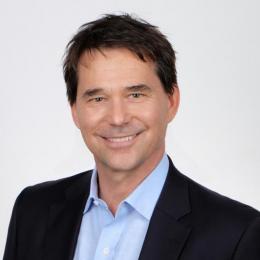Our legal department recently launched an innovative mentoring program for college students and recent graduates with disabilities, some of whom were interested in pursuing a legal career. The success of this initiative, launched in partnership with the National Federation of the Blind, has revealed how mentoring can be a powerful tool to achieve more diversity.
Diversity is intrinsically desirable from a social justice perspective. But it also makes good business sense. Numerous studies show that diverse teams outperform homogenous ones in many ways. For example, a company’s financial performance improves along with its level of racial, ethnic, and gender diversity.1 Diverse teams are also more innovative and better at solving complex, nonroutine problems.2
But to achieve such outperformance requires “cognitive diversity,” which is defined as “the extent to which the group reflects differences in knowledge, including beliefs, preferences and perspectives.”3 That usually requires seeking diversity beyond race and gender to include educational attainment, national origin, age, sexual orientation, disability, and other characteristics. The deeper the level of diversity across all dimensions, the more likely a group is to be cognitively diverse. A Harvard study of 1.5 million scientific papers, for instance, found that those written by more diverse groups of authors and associated with greater geographical and intellectual diversity had more citations and higher impact factors.4
Mentoring can play a vital role in promoting diversity because it is an easy and cost-effective way to attract, retain, and motivate diverse talent. It sends a strong signal to marginalized groups that typically lack optimal support networks that they are valued and desirable.
Mentoring programs can be structured in different ways depending on the specific needs of the company and individuals involved. But for the program to be successful, it must be authentic. It must focus on helping mentees develop their knowledge, networks and careers and (to paraphrase Steve Jobs) how to make their dents in the universe.
At Pearson, our legal professionals are supporting disabled young mentees to develop career plans that reflect their true interests and capabilities, without regard to their disabilities or others’ perceptions of what is “appropriate.” The model leverages our internal resources and is innovative, inexpensive, and replicable.
We decided to focus on disabled professionals because they are highly marginalized both in our profession and within the job market as a whole. Despite being the largest minority in the United States, disabled people have by far the largest unemployment rate.5 Only 0.38 percent of all lawyers in law firms are disabled.6
That is shockingly low, leaving precious few disabled lawyers to act as role models for younger disabled professionals, with the result that pathways for success can seem hard to scale. Many get discouraged. A UK study found that, even though the scope and level of career aspirations of disabled and non-disabled 16-year-olds are similar, the gap between unemployed disabled and non-disabled people widens as they age.7 In the United States, 60 percent of all 1.4 million disabled college graduates are unemployed.8 Those who do find work are 16 percent more likely than nondisabled graduates to be underemployed and working in service-related jobs that do not require a college degree.9
A culture of low expectations is pervasive when it comes to disabled professionals. As one disabled senior in-house attorney remarked, “many professionals assume I am unemployed or work from home. Astonished to learn that I am an attorney, many proclaim me ‘an inspiration’ as if the biggest challenge in law school was negotiating hallways in a wheelchair, not mastering the rule against perpetuities.”10
Our mentoring experience has convinced me that success can lie in such simple things as being authentic, challenging self-defeating assumptions, providing gentle encouragement, and helping disabled mentees to discover and then harness the power of their own narratives.
The results speak for themselves. Although our program is less than a year old, in that time our mentees have been admitted to Harvard Law School and promoted at Apple, interviewed for and secured sought-after positions, and decided to attend or apply to great graduate programs. On a human level, this feedback from one mentee says it all: “I was able to ask [my mentor] questions of any kind without feeling silly. She brainstormed with me when I needed to solve a problem, and has also celebrated with me when I have had a success. [She] has truly had an impact on my life….”
So little effort can yield so much. If we all chipped in, we would enjoy a more diverse workforce.
NOTES
1 Vivian Hunt, Dennis Layton and Sarah Prince, “Why Diversity Matters,” McKinsey & Company, January 2015.
2 Katherine W. Phillips, “How Diversity Makes Us Smarter,” Scientific American, October 1, 2004.
3 Mitchell, R and Nicholas, S (2006) “Knowledge Creation in Groups: The Value of Cognitive Diversity, Transactive Memory, and Openmindedness Norms” (citing Miller, CC, Burke LM, Glick WH (1998) “Cognitive diversity among upper-echelon executives: Implications for strategic decision processes.” Strategic Management Journal, Vol.19, No.1, pp 39), The Electronic Journal of Knowledge Management, Vol. 4 Issue 1, pp 67-74.
4 Katherine W. Phillips, “How Diversity Makes Us Smarter,” Scientific American, October 1, 2004.
5 Stuart Pixley, “Lawyering with Challenges: Disability and Empowerment,” The Professional Lawyer Vol. 23, Number 1, p. 3 (citing Cornell University Disability Statistics), 2015 American Bar Association.
6 “NALP 2016 Report on Diversity in U.S. Law Firms,” National Association for Law Placement, Inc. (NALP), January 2017.
7 Tania Burchardt, “The education and employment of disabled young people - Frustrated ambition,” The London School of Economics and Political Science, 2005.
8 “Bridging the Employment Gap for Students with Disabilities,” pp. 3-4, 2014 National Organization on Disability.
9 Jason R. Abel and Richard Deitz, “Underemployment in the Early Careers of College Graduates Following the Great Recession,” Federal Reserve Bank of New York Staff Reports, no. 749 December 2015; revised September 2016 JEL Classification: I23, J23, J24, J62.
10 Stuart Pixley, “Lawyering with Challenges: Disability and Empowerment,” The Professional Lawyer Vol. 23, Number 1, p. 3 (citing Cornell University Disability Statistics), 2015 American Bar Association.




